1 of 10
Download to read offline
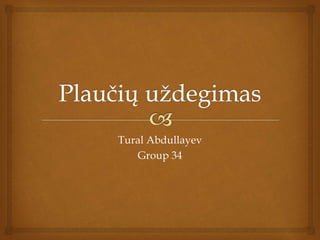
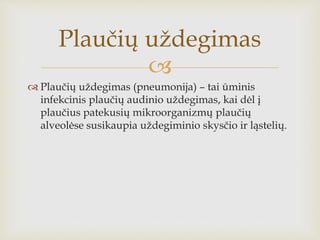

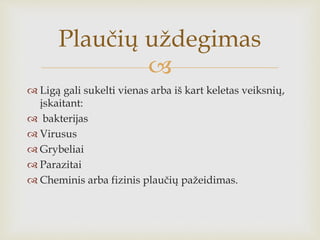
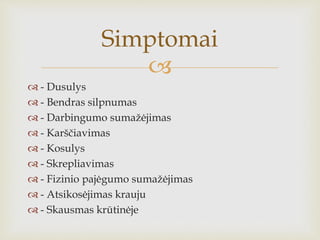


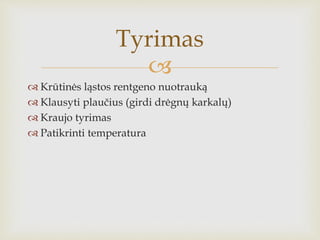
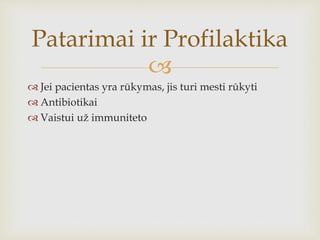
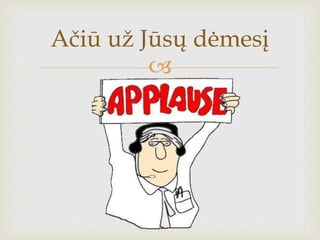
Ad
Recommended
Lietuvos nepriklausomybÄ—s kovos
Lietuvos nepriklausomybÄ—s kovosDarius JukneviÄŤius
Ěý
Lietuvos nepriklausomybÄ—s kovos by Darius JukneviÄŤiusSotsiaalne Kihistumine, Sotsiaalne Staatus Ja Sotsiaalne Roll
Sotsiaalne Kihistumine, Sotsiaalne Staatus Ja Sotsiaalne Rollsvetgord
Ěý
Sotsiaalne kihistumine ja võimRootsi aeg Eesti alal
Rootsi aeg Eesti alalDagmar Seljamäe
Ěý
Märkmed Rootsi ajast Eesti alal gümnaasiumile, linnad, käsitöö, kaubandus, tööndus, vaimuelu. Puudub materjal valitsemiskorraldusest ning talupoegade õiguslikust seisundist.Balti riigid II maailmasõjas ja nõukogude okupatsiooni all
Balti riigid II maailmasõjas ja nõukogude okupatsiooni allDagmar Seljamäe
Ěý
Gümnaasiumile, lisamaterjaligaEesti NSV kultuurielu (põhikoolile)
Eesti NSV kultuurielu (põhikoolile)Dagmar Seljamäe
Ěý
Põhikoolile, illustratsioonidega sotsrealismist ja Ülo SoosteriltGetting Social Media RIGHT - #NSBAConf
Getting Social Media RIGHT - #NSBAConfAngela Maiers
Ěý
The document discusses the significance of passion-driven, social-centered connections in community building and communication strategies through social media. It emphasizes the importance of storytelling for brands and engaging audiences to enhance their awareness and participation. Additionally, it provides practical tools and examples for teachers and parents to effectively communicate and collaborate in educational settings.Assistive technology for deaf or hard of hearing
Assistive technology for deaf or hard of hearingTural Abdullayev
Ěý
The document discusses different types of assistive technology for deaf or hard of hearing individuals. It describes assistive listening devices like hearing loops, FM systems, and infrared systems which transmit amplified sound. It also covers augmentative and alternative communication devices like picture boards and speech-generating devices for face-to-face communication, as well as TTY machines and relay services for phone communication. Finally, it mentions alerting devices that use light, sound or vibration to notify users of events.More Related Content
What's hot (20)
Sotsiaalne Kihistumine, Sotsiaalne Staatus Ja Sotsiaalne Roll
Sotsiaalne Kihistumine, Sotsiaalne Staatus Ja Sotsiaalne Rollsvetgord
Ěý
Sotsiaalne kihistumine ja võimRootsi aeg Eesti alal
Rootsi aeg Eesti alalDagmar Seljamäe
Ěý
Märkmed Rootsi ajast Eesti alal gümnaasiumile, linnad, käsitöö, kaubandus, tööndus, vaimuelu. Puudub materjal valitsemiskorraldusest ning talupoegade õiguslikust seisundist.Balti riigid II maailmasõjas ja nõukogude okupatsiooni all
Balti riigid II maailmasõjas ja nõukogude okupatsiooni allDagmar Seljamäe
Ěý
Gümnaasiumile, lisamaterjaligaEesti NSV kultuurielu (põhikoolile)
Eesti NSV kultuurielu (põhikoolile)Dagmar Seljamäe
Ěý
Põhikoolile, illustratsioonidega sotsrealismist ja Ülo SoosteriltViewers also liked (15)
Getting Social Media RIGHT - #NSBAConf
Getting Social Media RIGHT - #NSBAConfAngela Maiers
Ěý
The document discusses the significance of passion-driven, social-centered connections in community building and communication strategies through social media. It emphasizes the importance of storytelling for brands and engaging audiences to enhance their awareness and participation. Additionally, it provides practical tools and examples for teachers and parents to effectively communicate and collaborate in educational settings.Assistive technology for deaf or hard of hearing
Assistive technology for deaf or hard of hearingTural Abdullayev
Ěý
The document discusses different types of assistive technology for deaf or hard of hearing individuals. It describes assistive listening devices like hearing loops, FM systems, and infrared systems which transmit amplified sound. It also covers augmentative and alternative communication devices like picture boards and speech-generating devices for face-to-face communication, as well as TTY machines and relay services for phone communication. Finally, it mentions alerting devices that use light, sound or vibration to notify users of events.Traditional Chinese medicine
Traditional Chinese medicineTural Abdullayev
Ěý
Traditional Chinese Medicine (TCM) is an ancient practice that utilizes herbal remedies and mind-body techniques such as acupuncture and tai chi to promote health and prevent illness. The foundational beliefs of TCM include the concepts of yin and yang, the five elements, and the flow of qi, which are all essential in understanding the body's function and its ailments. TCM incorporates various treatment methods including herbal medicine, acupuncture, moxibustion, and therapeutic massage, while noting the potential risks and side effects associated with each practice.structure of proteins and posttraslational modification of proteins and its s...
structure of proteins and posttraslational modification of proteins and its s...Tural Abdullayev
Ěý
The document discusses the assembly of spatial structures of proteins, outlining the four levels of protein structure: primary, secondary, tertiary, and quaternary, and their significance in protein function. It details posttranslational modifications that proteins undergo after emerging from the ribosome, which can alter their activity or stability through various biochemical processes. Additionally, the document highlights the implications of these modifications for the function of proteins, such as in blood coagulation and protein stability.Beta adrenoceptor agonists
Beta adrenoceptor agonistsTural Abdullayev
Ěý
Beta-adrenoceptor agonists (β-agonists) bind to β1 and β2 receptors in the heart, blood vessels, and other tissues. In the heart, this increases heart rate, contractility, conduction velocity and relaxation through activation of Gs proteins, cAMP, and downstream targets like calcium channels and myosin phosphorylation. In blood vessels, β-agonists cause smooth muscle relaxation through similar cAMP-mediated inhibition of myosin light chain kinase. Therapeutically, β-agonists are used to treat acute and refractory heart failure as well as circulatory shock by increasing cardiac output and vasodilation.Unexplained leukocytosis in an adult
Unexplained leukocytosis in an adultTural Abdullayev
Ěý
The document discusses a case of unexplained leukocytosis in a 50-year-old man, characterized by a significantly elevated white blood cell count and symptoms of fatigue and early satiety, with no evidence of infection or inflammatory conditions. The findings suggest a likely diagnosis of chronic myelogenous leukemia (CML), supported by laboratory results and a differential diagnosis considering various hematologic disorders. The document also outlines diagnostic approaches and potential treatment options, including tyrosine kinase inhibitors and stem cell transplantation.Inotropic drugs digitalis
Inotropic drugs digitalisTural Abdullayev
Ěý
Inotropic drugs, particularly digitalis, enhance cardiac muscle contractility, primarily through increased cytoplasmic calcium concentration and inhibition of Na/K ATPase. These actions improve heart efficiency and circulation while decreasing heart rate and myocardial oxygen demand. The therapeutic uses of digoxin include severe left ventricular systolic dysfunction and heart failure with atrial fibrillation, although it carries risks for arrhythmias and other adverse effects.Acid-base balance
Acid-base balanceTural Abdullayev
Ěý
The document discusses the four main buffering mechanisms that the body uses to regulate acid-base balance: bicarbonate buffering system, intracellular buffering system, respiratory compensation, and renal compensation. It provides details on how each system works to compensate for metabolic acidosis and alkalosis as well as respiratory acidosis and alkalosis. The bicarbonate buffering system involves carbon dioxide combining with water to form carbonic acid, which dissociates into hydrogen ions and bicarbonate ions. Respiratory compensation increases or decreases breathing rate to alter plasma pH, while renal compensation increases bicarbonate production and acid excretion to restore balance.Reticular formation in control of motor functions
Reticular formation in control of motor functionsTural Abdullayev
Ěý
The reticular formation is located in the central core of the brainstem and controls motor functions through direct and indirect projections. It contains two reticulospinal tracts - the medial and lateral tracts - that project to different regions of the spinal cord and modulate muscle tone, reflexes, posture, and movement. The reticular formation also projects to motor control centers in the brainstem, cerebellum, basal ganglia, and cortex to regulate skeletal muscle activity during facial expressions, voluntary movement, respiration, and maintaining balance and posture.Pathophysiology of Parkinsonism
Pathophysiology of ParkinsonismTural Abdullayev
Ěý
Parkinson's disease is caused by the destruction of dopaminergic neurons in the substantia nigra, which leads to reduced dopamine in the corpus striatum. The substantia nigra contains dopaminergic neurons that project to and modulate activity in the striatum. Damage to these neurons in Parkinson's disease results in less dopamine signaling in the striatum and overproduction of acetylcholine by striatal neurons. Common drug treatments for Parkinson's include levodopa, dopamine agonists, NMDA antagonists, MAO-B inhibitors, COMT inhibitors, and anticholinergic drugs.External and internal structure of testes
External and internal structure of testesTural Abdullayev
Ěý
The document provides detailed information about the anatomy, vascular supply, innervation, and age-related changes of the testes, including descriptions of their external and internal structures, vascularization, and the mechanisms of varicocele. It elaborates on layers such as the tunica and various ducts involved in sperm transport, as well as the development and changes occurring from fetal stages to old age. Additionally, it addresses idiopathic and secondary varicoceles, discussing their causes and implications.History of traditional chinese medicine powerpoint
History of traditional chinese medicine powerpointjoan63
Ěý
1) Traditional Chinese Medicine originated from ancient mythology and legends attributed to legendary emperors like Huang Di from around 2600 BC.
2) The Yellow Emperor's Inner Classic, compiled around 100 BC, is considered a foundational text of Chinese medicine and discusses theories like yin-yang and the five phases.
3) During the Han dynasty from 206 BC to AD 220, Chinese medicine developed further with integration of concepts like yin-yang and the five phases into diagnosis and treatment. Major texts from this period organized therapeutic approaches.Estrogens ( Mechanism of action, adverse effects, pharmacokinetics and metabo...
Estrogens ( Mechanism of action, adverse effects, pharmacokinetics and metabo...Tural Abdullayev
Ěý
The document outlines various types of estrogens including estradiol, estrone, and synthetics like ethynyl estradiol, detailing their roles, mechanisms of action, therapeutic uses, and pharmacokinetics. It discusses the mechanism of estrogen receptors, the interactions of selective estrogen receptor modulators (SERMs) like tamoxifen and raloxifene, and their effects on breast cancer and osteoporosis. The document also covers potential adverse effects of estrogen therapy, including risks of thromboembolic events and various hormonal side effects.Traditional Chinese Medicine
Traditional Chinese MedicineFieldgarodie
Ěý
Traditional Chinese medicine has been practiced for over 5,000 years and includes techniques like acupuncture, herbalism, and massage therapy. Herbalism involves using plants and plant extracts as medicine, with the first herbalism book in China listing 365 medicinal plants. Acupuncture places thin needles into the skin at specific points to balance the body's energy flow and treat various illnesses. Massage therapy involves four stages - relief of pain, correction of issues, strengthening of muscles, and maintenance to prevent future problems. These traditional Chinese medicine practices continue to be used worldwide as effective and inexpensive treatment options.Traditional Chinese Medicine
Traditional Chinese Medicine Joanne Chen
Ěý
Traditional Chinese Medicine (TCM) has been used in China for over 2000 years based on principles of Yin Yang balance and Qi flow. TCM uses several treatment methods including herbalism, acupuncture, moxibustion, cupping, massage, and exercises like Tai Chi and Qigong to balance the body and prevent or treat illness by restoring harmony. Herbal remedies are commonly used and involve formulas of different herbs to target organ imbalances based on the five element theory.Ad
More from Tural Abdullayev (7)
Pneumonie (LungenentzĂĽndung)Tural Abdullayev
Ěý
Pneumonie ist eine Entzündung des Lungengewebes, hauptsächlich verursacht durch Bakterien, und kann in verschiedene Formen eingeteilt werden, z.B. alveoläre und interstitielle Pneumonie. Die Diagnose erfolgt durch Anamnese, körperliche Untersuchung, bildgebende Verfahren und Labordiagnostik, wobei typische Symptome Fieber, Husten und Atemnot sind. Die Behandlung umfasst Bettruhe, Sauerstoffgabe bei Bedarf und antimikrobielle Therapie, während die Notwendigkeit einer stationären Aufnahme anhand spezifischer Kriterien wie dem CRB-65-Score bewertet wird.Turner syndrome
Turner syndromeTural Abdullayev
Ěý
Turner syndrome is a common sex chromosome abnormality in females, with a prevalence of 1 in 2000 to 1 in 2500 live births, often leading to early pregnancy termination. Characteristic features include short stature, shield chest, and specific cardiac and renal anomalies, and diagnosis typically involves karyotype analysis. Management focuses on addressing associated health issues, including growth hormone therapy for short stature and monitoring for cardiovascular risks.Neuroanatomy of the pain structures in the spinal
Neuroanatomy of the pain structures in the spinalTural Abdullayev
Ěý
The document outlines the neuroanatomy of pain structures in the spinal cord, detailing the types of sensory receptors, including exteroceptors, interoceptors, and proprioceptors, as well as their functions. It describes the pathways of afferent and efferent fibers within peripheral nerves and their distribution in the spinal cord, including the dorsal and anterolateral ascending tracts responsible for different sensations. Additionally, it classifies nerve fibers into A, B, and C types based on myelination, function, and sensory roles, illustrating how signals are processed and conveyed to the brain.Psychological and emotional symptoms in patients suffering from chronc fatigu...
Psychological and emotional symptoms in patients suffering from chronc fatigu...Tural Abdullayev
Ěý
This literature review examines the complex relationship between chronic fatigue syndrome (CFS), anxiety, and sleep disorders, highlighting the prevalence and clinical characteristics of CFS. It discusses various diagnostic criteria for CFS, its symptoms, and the high rates of anxiety and depression in patients, as well as the challenges in defining and assessing nonrestorative sleep. The findings emphasize the importance of evaluating sleep quality and psychological factors in managing patients with CFS.Types and groups of antidepressants
Types and groups of antidepressantsTural Abdullayev
Ěý
The document provides a comprehensive overview of various types of antidepressants, including SSRIs, SNRIs, TCAs, and MAOIs, detailing their targets, indications, dosing regimens, mechanisms of action, side effects, and contraindications. It emphasizes the importance of understanding the mechanisms and potential interactions associated with these medications, particularly regarding serotonin syndrome and other adverse effects. Information is presented in a structured manner, highlighting key medications along with their respective therapeutic use cases.Psychology family of an ill person (Tural Abdullayev)
Psychology family of an ill person (Tural Abdullayev)Tural Abdullayev
Ěý
The document discusses the impact of illness and hospitalization on children and their families. It notes that younger children struggle more due to limited understanding and fear of the unfamiliar hospital environment. Families typically go through stages of shock, anger, depression and eventual adaptation when a family member is diagnosed with a serious illness like cancer. The illness can cause changes in responsibilities, rules, needs, sexuality and thinking about the future. The document provides tips for families like learning about the disease, supporting the ill person, and not being influenced by their negative behaviors.Ad
PlauÄŤiĹł uĹľdegimas
- 2.   Plaučių uždegimas (pneumonija) – tai ūminis infekcinis plaučių audinio uždegimas, kai dėl į plaučius patekusių mikroorganizmų plaučių alveolėse susikaupia uždegiminio skysčio ir ląstelių. Plaučių uždegimas
- 3. ď‚–
- 4.   Ligą gali sukelti vienas arba iš kart keletas veiksnių, įskaitant:  bakterijas  Virusus  Grybeliai  Parazitai  Cheminis arba fizinis plaučių pažeidimas. Plaučių uždegimas
- 5.   - Dusulys  - Bendras silpnumas  - Darbingumo sumažėjimas  - Karščiavimas  - Kosulys  - Skrepliavimas  - Fizinio pajėgumo sumažėjimas  - Atsikosėjimas krauju  - Skausmas krūtinėje Simptomai
- 6.   Plaučių uždegimą sukelia įvairūs infekcijos sukėlėjai (patogeniniai bakterijos ir virusai), patekę į plaučių alveoles. Dažniausiai ligą sukelia Streptococcus pneumoniae, Haemophilus influenzae, Staphylococcus aureus. Plaučių uždegimo priežastimi gali būti ir daugiau kaip vienas sukėlėjas. Tikimybė susirgti plaučių uždegimu priklauso ne tik nuo mikroorganizmo, bet ir nuo žmogaus organizmo gynybinių ypatybių, aplinkos. Priežastis
- 7.   Palankias sąlygas ligai prasidėti sudaro:  Ūminė virusinė kvėpavimo takų infekcija (peršalimas ar gripas)  Lėtinės kvėpavimo takų ligos  Rūkymas  Alkoholizmas  žmogaus imuniteto nusilpimas Priežastis
- 8.   Krūtinės ląstos rentgeno nuotrauką  Klausyti plaučius (girdi drėgnų karkalų)  Kraujo tyrimas  Patikrinti temperatura Tyrimas
- 9.   Jei pacientas yra rūkymas, jis turi mesti rūkyti  Antibiotikai  Vaistui už immuniteto Patarimai ir Profilaktika
- 10. ď‚– AÄŤiĹ« uĹľ JĹ«sĹł »ĺÄ—łľ±đ˛őÄŻ